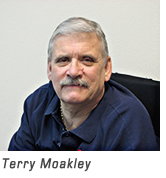 If singer-songwriter Bob Dylan follows politics, the title of both this piece and his 1964 album, which I’m old enough to remember, could easily be applied to the composition of the new 113th United States Congress. The reality is that Congress is changing in a similar manner to the populace of our nation.
If singer-songwriter Bob Dylan follows politics, the title of both this piece and his 1964 album, which I’m old enough to remember, could easily be applied to the composition of the new 113th United States Congress. The reality is that Congress is changing in a similar manner to the populace of our nation.
For instance, a record number of women—98 in total, with 78 women serving in the House of Representatives and 20 in the Senate—were elected to office last November. To me, this growth in the number of female legislators is no surprise. There is a much higher percentage of women in the workplace today, thanks to groups like the National Organization for Women, and federal and state government laws and regulations.
Also, last November’s election produced a record number of Hispanic or Latino legislators. There are 36 Hispanic or Latino legislators in the 113th Congress, with 32 representatives in the House and four in the Senate.
I have what I consider to be a strong personal connection to both of these trends. For many years, my members of the House of Representatives were a series of men, but in November, due to a combination of redistricting and just plain popularity, the Honorable Nita Lowey became my Congresswoman. And second, my spouse is Latino and very smart, and this makes me a lucky man in general.
However, there is one other trend in the makeup of the 113th Congress that may or may not be worrisome. On the one hand, the percentage of military veterans serving in the Congress is at its lowest point since the draft system ended in the late 1970s. About 20% of the combined House and Senate are either military veterans or are persons who continue to serve in a reserve unit.
On the other side of this equation is the fact that in the 113th Congress, 16 veterans from the wars in Iraq and Afghanistan were re-elected or elected to the House of Representatives. The number of Iraq and Afghanistan war veterans running for the Senate or the House is growing, and it is predicted by some pundits to grow even higher in the years ahead.
The fact that 2.4 million members of our armed forces were deployed post 9/11 to Iraq and Afghanistan makes me believe that many of our younger, better-educated veterans will enter the world of politics in greater numbers in the future. Will we ever return to the numbers of veterans serving in the Congress in the late 1970s, which was about 80% of them?
Probably not. But as we move forward as an accredited veterans service organization, we have a responsibility to encourage younger vets to further their education, and to become instruments of change themselves. If, over the course of the next 10 to 20 years, we see the number of post 9/11 veterans who win House and Senate elections continue to grow, I’m confident that our nation will be in good hands.
Terry Moakley
Chair of the VetsFirst Committee
